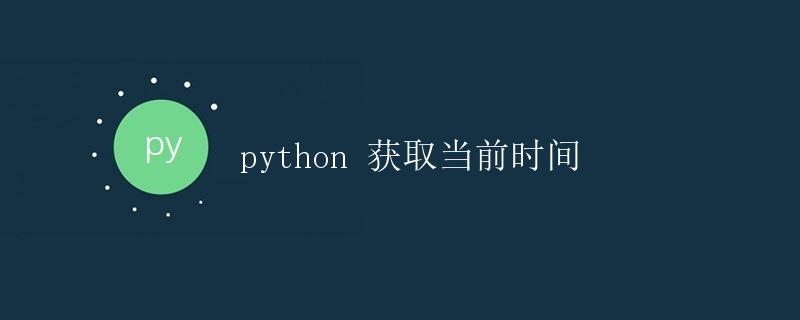Python 获取当前时间

在 Python 中,我们可以使用 datetime 模块来获取当前时间。datetime 模块提供了用于操作日期和时间的类和方法,让我们能够轻松地处理时间信息。
下面来看看如何使用 datetime 模块获取当前时间的方法。
使用 datetime.datetime.now()
datetime.datetime.now() 方法可以获取当前的日期时间。这个方法返回一个 datetime 对象,表示当前的日期时间,包括年、月、日、时、分、秒和微秒。
import datetime
now = datetime.datetime.now()
print(now)
运行以上代码,将会得到类似以下输出:
2022-02-22 15:30:45.123456
输出表示的是当前的日期时间,包括年、月、日、时、分、秒和微秒。
使用 datetime.datetime.today()
除了 datetime.now() 方法,datetime 模块还提供了 datetime.today() 方法来获取当前的日期时间。datetime.today() 方法与 datetime.now() 方法类似,也返回一个 datetime 对象,表示当前的日期时间。
import datetime
today = datetime.datetime.today()
print(today)
运行以上代码,输出将类似如下:
2022-02-22 15:30:45.123456
这里的输出也表示当前的日期时间,包括年、月、日、时、分、秒和微秒。
获取当前日期和时间的各部分
除了直接获取当前的日期时间对象外,我们也可以分别获取当前日期时间的各个部分,比如年、月、日、时、分、秒等。datetime 模块提供了多个属性来分别获取日期时间对象的各个部分。
以下是演示如何获取当前日期时间的各个部分的代码示例:
import datetime
now = datetime.datetime.now()
year = now.year
month = now.month
day = now.day
hour = now.hour
minute = now.minute
second = now.second
microsecond = now.microsecond
print(f"Year: {year}")
print(f"Month: {month}")
print(f"Day: {day}")
print(f"Hour: {hour}")
print(f"Minute: {minute}")
print(f"Second: {second}")
print(f"Microsecond: {microsecond}")
运行以上代码,将会输出当前日期时间的各个部分:
Year: 2022
Month: 2
Day: 22
Hour: 15
Minute: 30
Second: 45
Microsecond: 123456
格式化日期时间字符串
在实际开发中,有时我们需要将日期时间对象格式化成特定的字符串形式,便于展示或保存。datetime 模块提供了 strftime() 方法来格式化日期时间对象成字符串。
以下是一个示例代码,演示如何将当前日期时间格式化成指定字符串:
import datetime
now = datetime.datetime.now()
formatted_time = now.strftime("%Y-%m-%d %H:%M:%S")
print(formatted_time)
运行以上代码,将会输出格式化后的日期时间字符串:
2022-02-22 15:30:45
在 strftime() 方法中,我们可以使用不同的格式化指令来定义日期时间的格式,比如 %Y 表示年份(四位数),%m 表示月份(01-12),%d 表示日期(01-31),%H 表示小时(00-23),%M 表示分钟(00-59),%S 表示秒(00-59)等。
总结
通过本文的介绍,我们了解了在 Python 中如何使用 datetime 模块来获取当前的日期时间,并且学会了如何获取日期时间的各个部分以及如何将日期时间格式化成字符串。datetime 模块提供了丰富的方法来操作日期时间,非常方便实用。
 极客教程
极客教程